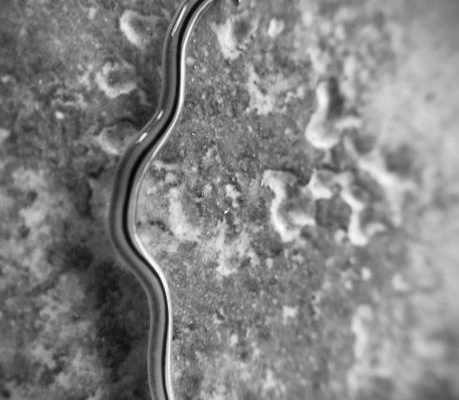
Hammerhead worms, known for their distinct, flattened heads that resemble a hammer, are a type of predatory flatworm. They can be found in various habitats, from damp gardens to lush forests. However, their presence is greatly influenced by climate. Just like how we might pull on a sweater when it gets chilly or seek shade when the sun blares, these worms also react to temperature, humidity, and other environmental factors. In this article, we’ll explore how climate shapes the ranges of hammerhead worms and why understanding this is essential for grasping broader ecological changes.
Understanding Hammerhead Worms
Before diving into how climate affects their ranges, let’s get familiar with hammerhead worms. These fascinating creatures belong to the genus *Bipalium* and are mostly found in tropical and subtropical regions. They can grow quite large, some exceeding 12 inches in length, and are known for their remarkable ability to regenerate. If they lose part of their body, they can grow it back, much like a magician pulling a rabbit from a hat. This regenerative capability is, in part, why they flourish in certain environments.
Hammerhead worms are primarily nocturnal hunters. They feed on earthworms and other soft-bodied invertebrates. You might be wondering how they capture their prey. They use a fascinating strategy: hammerhead worms secrete a sticky mucus that immobilizes their victims. This method is efficient and showcases the worms’ adaptation skills, allowing them to thrive in diverse environments.
However, their ability to survive and prosper is closely tied to climate. Whether it’s a damp garden or a warm forest floor, the unique qualities of an area can either support or hinder their growth and reproduction.
Climate and Temperature Ranges
Temperature plays a crucial role in determining where hammerhead worms can live. These worms thrive in warm, humid environments, often found in places where the temperature stays between 68°F and 86°F (20°C to 30°C). Imagine it like this: if you were stuck in a frigid room, you’d likely shiver and not be able to function well—just like these worms in cooler conditions.
As temperatures rise, these worms expand their range, moving into new territories that were once too chilly for them. Conversely, in cooler climates, their activity decreases. During the colder months, they may burrow deeper into the soil, where temperatures remain more consistent. This seasonal behavior is vital for their survival and reproduction rates.
With global climate change leading to rising temperatures, the distribution of hammerhead worms is likely to shift. They may migrate to cooler areas or face challenges in adapting to sudden changes. Just as we adapt our daily lives to new weather patterns, these worms adjust, but the speed of climate change can create uncertainty.
Humidity and Moisture Levels
Alongside temperature, humidity significantly impacts the hammerhead worm’s habitat. These creatures need **moist environments** to thrive. High humidity levels help them stay hydrated and maintain their soft bodies. Imagine trying to breathe in a dry desert; it’s uncomfortable and limiting, right? That’s what high dryness feels like for hammerhead worms.
Regions with consistent rainfall or moist soil provide ideal conditions. In contrast, areas experiencing drought can spell disaster for these worms. With climate change leading to more unpredictable weather patterns, the availability of moisture can fluctuate dramatically. This inconsistency can lead to shifts in where hammerhead worms can be found.
For instance, as certain regions dry out due to prolonged droughts, hammerhead worms may retract and become less visible. They might even migrate to new areas where moisture levels are more suitable. This movement not only affects the worms but potentially disrupts the entire ecosystem, as their hunting patterns influence the populations of the organisms they prey upon.
Impact of Climate Change on Hammerhead Worm Distribution
As we face rising global temperatures and shifting weather patterns, the ranges of hammerhead worms are likely to change significantly. These worms are sensitive indicators of their environment, which means their movements can help us understand larger ecological shifts caused by climate change.
You might find it interesting that, as temperatures rise, new areas previously unsuitable for hammerhead worms may become habitable. For example, regions in North America that were once too cold might start supporting populations of these worms, changing the ecological balance. On the flip side, areas that are experiencing extreme heat or drought can see populations dwindle or disappear entirely.
This reshuffling of species can lead to **trophic cascades**, where the loss or increase of one species causes ripple effects throughout the ecosystem. For instance, if hammerhead worms leave an area, the worms they prey on could reproduce unchecked, leading to imbalances in soil health and nutrient cycling.
Ecological Consequences of Hammerhead Worm Migration
The migration of hammerhead worms, whether into new territories or away from unsuitable ones, has significant ecological consequences. When they move into a new area, they can impact local ecosystems in various ways. Their predation on earthworms and other invertebrates can disrupt food webs, leaving gaps in nutrition for species higher up the food chain.
Consider a food web like a delicate string of pearls. If you remove one pearl, the entire strand may lose its shape and integrity. By eating earthworms, hammerhead worms may outcompete native predators, creating a decline in local species. This shift not only alters the soil composition but can also affect plant growth, as earthworms are crucial for aerating soil and facilitating nutrient absorption.
Moreover, as hammerhead worms continue migrating, they may bring along parasites or diseases that could threaten local wildlife. This introduces an added layer of complexity to their impact on new environments, making it essential for ecologists to monitor hammerhead worm populations and their movements.
Monitoring Hammerhead Worm Populations
Tracking the movement and population changes of hammerhead worms is vital for understanding their influence on ecosystems. Scientists use various methods, including field surveys and environmental DNA (eDNA) sampling, to gather information about these creatures. Simply put, eDNA sampling involves collecting samples from soil and analyzing them to detect the presence of hammerhead worm DNA.
This data is critical for predicting how climate change will affect not only hammerhead worms but also the ecosystems they inhabit. By understanding their ranges, conservationists can develop strategies for preserving biodiversity and maintaining the health of soil ecosystems.
Researchers are also studying how temperature and moisture changes impact their life cycle and reproductive capabilities. The more we know, the better equipped we are to protect our planet’s delicate balance.
Takeaway: The Bigger Picture
So, why does understanding hammerhead worms and their climate-driven ranges matter to us? Well, these small creatures act as a window into larger environmental changes. They remind us how interconnected life is on Earth. As climate affects one species, it can create a domino effect, impacting others and ultimately altering entire ecosystems.
By paying attention to creatures like hammerhead worms, we gain insights into the health of our planet. It’s like having a little guardian that signals when things are off-balance. We have the power to advocate for changes that can help protect our environment – be it through conservation efforts, educating ourselves and others, or adopting more sustainable practices.
In the end, the story of hammerhead worms is a tiny yet significant piece of the larger puzzle of climate change. By understanding their ranges and behaviors, we can better appreciate and protect the delicate balance of life around us.

